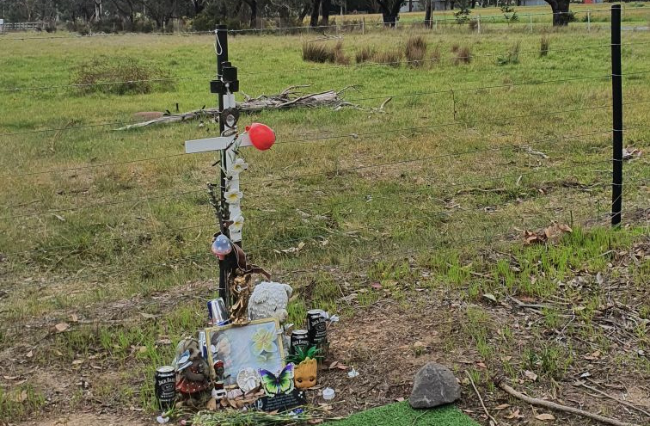For a regional journalist a regular workday can involve covering the minutiae of a small town, from the preps’ first day at school to a contentious council meeting to the unveiling of a new statue. In the blink of an eye, though, their whole day can change. They can find themselves reporting on a fatal fire or car crash—one that might involve a neighbour or old school friend—sometimes while still processing the shock themselves.
Since February this year, the regional Victorian city of Ballarat has experienced bushfire threat, three high-profile murder cases, multiple deadly car crashes and a fatal mining collapse. The effect of these events has been felt throughout the community and thrown the regional city into the national media spotlight.
But it’s local reporters who are on the ground during the event and its often painful aftermath, Matt Neal, editor for ABC Ballarat and South West Victoria, reminds us.
“We live in these communities that we’re covering so we’re not just breezing in doing the story and rolling out again,” he tells upstart.
Ballarat’s population of around 110,000 people make it the third-largest city in Victoria. Still, as locals would attest, the chances of bumping into someone you know is more likely than not. So, when tragedy strikes this tightly knit community, it impacts everyone. Neal ensures he remains hyperaware of this fact.
“We live here and so we’re very concerned about not doing harm to those people who might be already hurting, or [to] the community that’s already hurting,” he says.
During some of the events that impacted Ballarat this year, Neal’s team of journalists wrote stories around these events that would offer help and support to people who had been affected. In particular, they wrote about collective trauma and how to support the family and friends of a missing person.
Neal has been a reporter for 24 years and says that part of being a journalist is throwing “yourself into the proximity of horrible things”. This can be hard for reporters, he says, but especially when they’re experiencing the collective trauma of their town firsthand.
“It kind of really brings home to you the fact that these are real people,” he says.
“They’re not just the talent in a media story.”
There are also significant pressures on editors and reporters when deciding how to cover a story. The first decision relates to public interest. What information should be made public? Neal says this often differs from editor to editor but for him, the guiding principle is always “not doing harm”.
Brittany Carlson has worked as a small-town journalist in both Mildura and her hometown of the Bass Coast and covered the early days of the mushroom poisoning case as a junior journalist. She also keeps the wellbeing of locals at the top of her mind.
“You know these people that you are reporting on, so you don’t want to do anything that’s going to harm them,” she tells upstart.
While they’re looking out for their readers, journalists also must protect themselves from some of the events that they are witnessing—and feel a connection to.
Carlson says covering deaths within the community are the most difficult for her.
“I think [fatal] car crashes are a big thing for me,” she tells upstart. “You see how it affects the community, especially when it’s someone kind of well-known and you see how it affects your friends and the people in your life.”
It doesn’t help that living and reporting on smaller communities makes it almost impossible to shut off from work, Carlson says.
“It’s really hard to switch between a professional and a personal lens when it comes to [reporting on] those events.”
“It can be a lot, and I think you have to learn in yourself where to draw that line.”
Kimina Lyall, Deputy CEO of the Dart Centre Asia Pacific, an organisation supporting journalists to be trauma aware, says every reporter will be exposed to distressing events during their career. A 2007 study of journalists in the United States found that 79.6 percent of participants had attended the scene of a potentially traumatic event in course of doing their job. The likelihood of exposure increases for young journalists and those working in regional areas.
“Often there are far fewer resources so it’s the same journalists covering the town or region,” Lyall tells upstart.
“There’s no real protection if you work in [the] media.”
Because of the possible mental health impacts of what might have felt like relentless trauma for Ballarat’s journalists this year, Neal took extra consideration of his team and the community when he was reporting on the recent tragedies.
“…it was really important to me to check that they were always okay, that it wasn’t getting too much for them,” he says.
The ABC also had their trauma department work with journalists to debrief and develop strategies to cope.
One helpful thing Kimina Lyall recommends is that journalists take the time to exercise. This will help “get the trauma hormones, the adrenaline and the cortisol expelled from [their] body”.
This is something Carlson also recommends.
“Those things the experts tell you [will] make you feel better, really do make you feel better,” she says.
And her advice to young journalists who find themselves reporting on traumatic events in their local community is to not remove themselves from their feelings.
“Let yourself feel the emotion as well. Don’t try and shut them off and just go full journalist mode all the time.”
Article: Tia Clarkson-Pascoe is a second-year Bachelor of Media and Communications (Journalism) student at La Trobe University. You can follow her on Twitter @Tia_pascoe
Photo: Supplied by Deborah Pascoe and used with permission.









